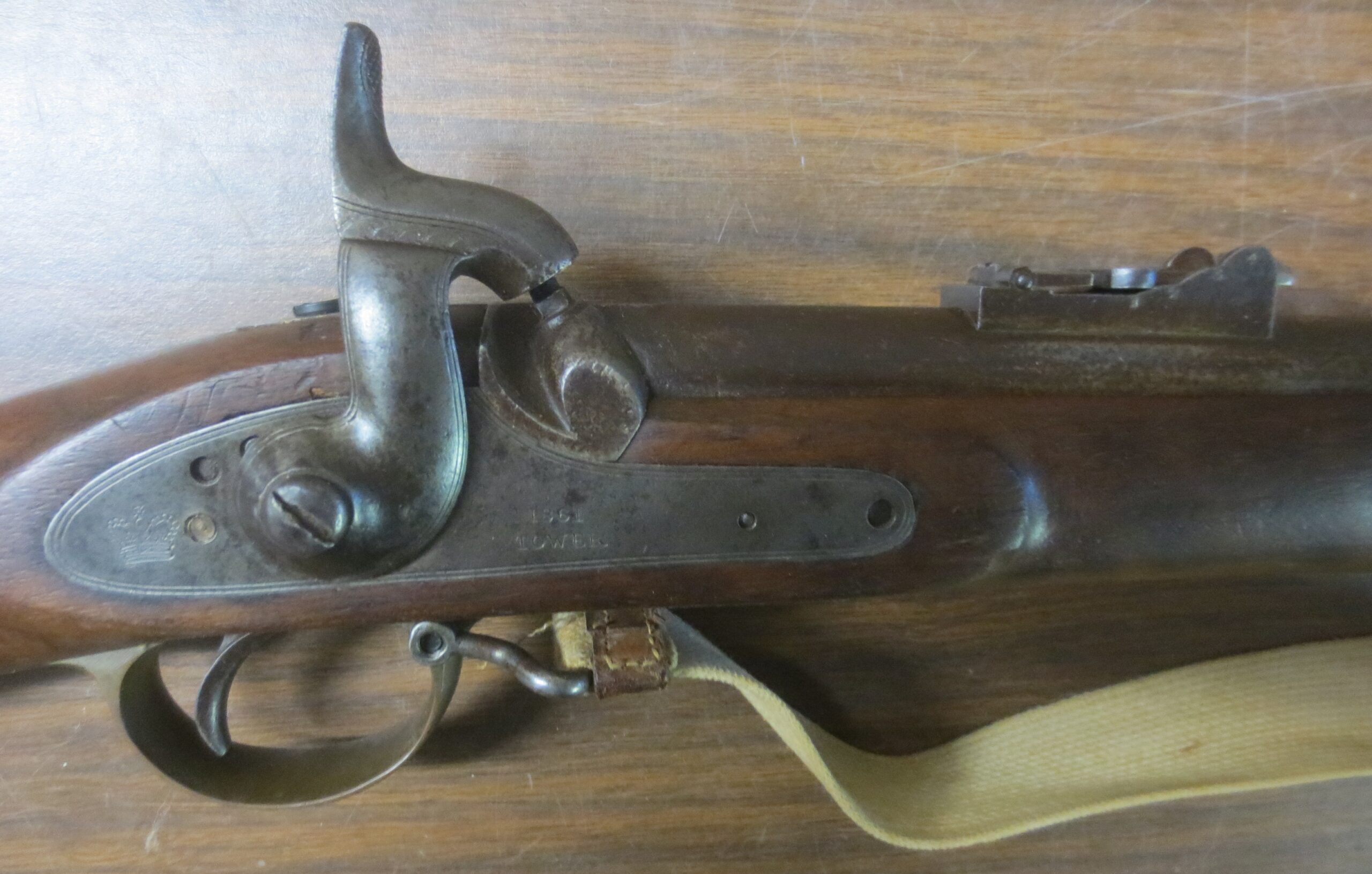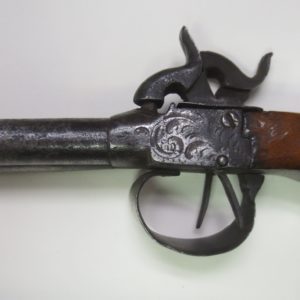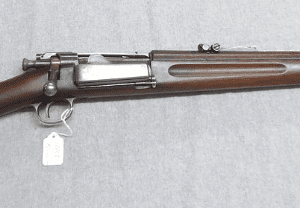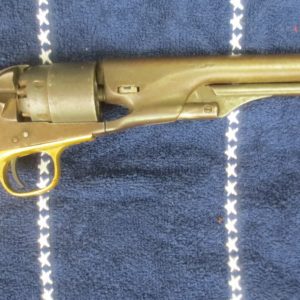Description
Gov. John Andrew of Massachusetts dispatched Francis B. Crowninshield on April 24, 1861, to England as his primary negotiator for the purchase of as many weapons as could be found to equip the volunteer troops that the Commonwealth was then raising. Following the recommendation of master armorer Charles McFarland of the Springfield Armory, Gov. Andrew directed Crowninshield to buy 25,000 stands of arms, preferably something comparable to the .58 caliber M1855 Springfield rifle – which McFarland was unable to provide.
Crowninshield and McFarland were able to secure contracts for the manufacture and export of 14,700 Enfield three-band “long” rifles to Massachusetts before the end of 1861. Once the Enfields arrived at the docks in Boston, the arms were put to immediate use. There were just enough to equip about half of the Massachusetts volunteer infantry regiments recruited by the end of 1861. The 27th was one of the units to be issued the imported weapons. The others were the 2nd, 7th, 10th, 12th, 13th, 16th, 19th, 20th, 21st, 22nd, 23rd, and 25th infantry regiments.
This weapon is in very nice condition overall and functions properly. The bore is well above average for those known to still exist. This weapon also bears the stamping of “CH 61” which indicates it was INTENDED to be sold to the Confederacy! An English style linen sling was added at some point, probably for display purposes. The stock has been cleaned and sanded many years ago so the bottom of the buttplate isn’t completely flush with the stock, as shown. All barrel markings are crisp and the weapon even shows some of the original blue finish in protected areas.
The ten companies of the 27th Massachusetts Volunteers were recruited in the western part of the State in the late summer and fall of 1861. The original recruits were officially mustered in for 3 years at Springfield between Sept. 19 and 27. The original recruitment of each of the 10 companies were centered in the following communities: Company A (Northampton), Company B (Athol), Company C (large variety of Western Mass. towns), Company D (Amherst, Hadley), Company E (Great Barrington, Lee, Pittsfield), Company F (Westfield, Granville, Southwick, Tolland), Company G (Chicopee, Northampton, Holyoke), Company H (Adams, Williamstown), Company I (Ludlow, Wilbraham, Brimfield, Palmer) and Company K (Springfield).
Once fully outfitted, they were sent south to Annapolis, Maryland in November and remained there undergoing instructions and drill for two months. In January, 1862, the regiment was shipped to North Carolina and assigned to Foster’s (1st) Brigade. The regiment’s first battles were fought at Roanoke Island and New Bern.
The regiment remained in North Carolina during the next two years. Because Colonel Horace Clark Lee was in command of the brigade most of the time, the regiment was mostly under the direct command of Lieutenant Colonel Luke Lyman. During its stay in North Carolina it was engaged with credit in numerous minor battles and skirmishes. In April, 1863, it aided in the siege of Washington, North Carolina. After the return to New Bern an expedition to Gum swamp was undertaken and in an engagement there a number of prisoners were captured. New Bern was the regiment’s headquarters until Oct. 10, 1863, when it was ordered to Newport News and was for a time occupied with routine duties at Norfolk and Portsmouth.
In April, 1864, the 27th Massachusetts was assigned to the Army of the James. It embarked for Virginia, docking at Yorktown, thence to Williamsburg, Fortress Monroe and Bermuda Hundred, where it landed and marched to Cobb’s hill. Soon afterward, the 27th was sent into action. The battles of Dunn’s farm and Port Walthall Junction followed and during one day the regiment had 5 wounded, while 50 were disabled by sunstroke. At Arrowfield Church the 27th was engaged as well.
On May 16, the regiment was engaged at the Battle of Proctor’s Creek (alternately Drewry’s Bluff or Fort Darling). After a brave defense of their position, much of the regiment was surrounded while fighting in a dense fog, losing in addition to its killed and wounded, 252 of its number taken prisoners. Among the captured were the colonel, lieutenant colonel, and General Heckman; some 120 would later die in prison suffering appalling conditions at Andersonville.
On May 26, the regiment was transferred to the Army of the Potomac. Within a week, Major William A. Walker was killed leading the regiment in the bloody assault on Confederate positions at the Battle of Cold Harbor on June 3. In this battle, an additional 22 were killed, 68 wounded, and 4 missing.
The remnants of the regiment were ordered to Petersburg to join in on the assault this city. In the assault on Petersburg, June 15, 1864, the 27th Massachusetts Infantry sustained a further loss of 13 killed, and 30 wounded, and was briefly left without any officer to lead them. After a very short rest, they were returned to active duty before Petersburg, which was the last service of those who had not reenlisted.
The reenlisted men and recruits of the regiment were sent south to Beaufort, North Carolina, encamped at Carolina City, then moved to Beaufort, Plymouth and Jamestown, where the enemy’s skirmishers were encountered. The Confederates disputed the possession of the bridge at Foster’s mills, but after the 27th crossed, retreated and the regiment pushed forward and captured a Confederate force at Butler’s bridge.
It returned in January 1865 to New Bern. On March 8, it was attacked at Southwest Creek (Wise’s Forks), where the whole brigade, with a few exceptions, was captured, after resisting for an hour in an engagement with Confederate General Hoke’s entire division of 8,000 men. The national and state colors barely escaped capture. Color Sergeant John McCleary (national) and Color-Corporal William W. Cummings were both wounded and the colors taken over by Corporal Lafayette Babb and Private Leverett Clarke. When capture became certain, these two men wrapped the colors around the staffs, hid them under a rotten log, and covered it with leaves and grass. When the prisoners were exchanged in April they told other members of the regiment at New Bern where to find the flags and they were recovered. The captives were taken to Richmond, paroled and then furloughed. The few who escaped, reinforced by recruits and convalescents, were assigned to guard duty at New Bern until mustered out.










